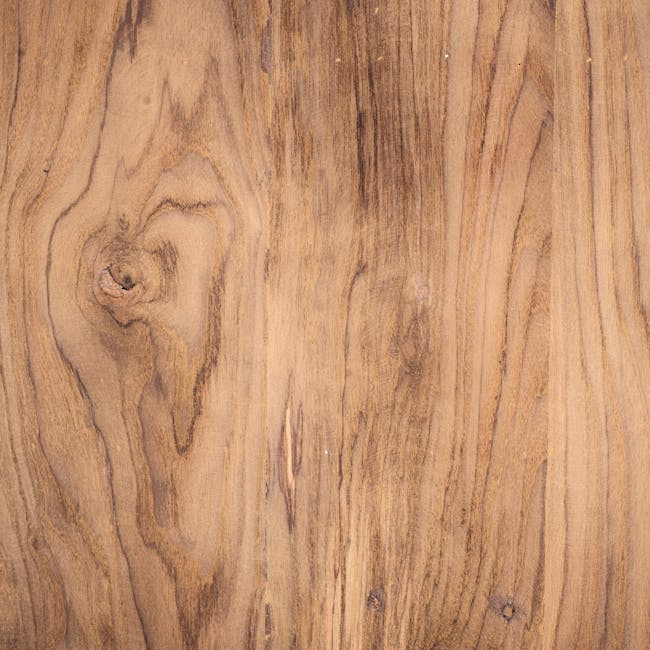Wood: The Versatile and Sustainable Material
Wood, a natural and abundant material, has played a crucial role in human civilization for millennia. From primitive shelters to modern skyscrapers, wood has been fundamental in shaping our built environment. Its versatility, sustainability, and aesthetic appeal have made it a highly sought-after material across various industries. Wood’s journey through history is a testament to its enduring value. Archaeological evidence suggests that early humans utilized wood for tools, weapons, and shelters as far back as the Stone Age. The development of agriculture and the rise of civilizations further solidified wood’s importance, as it became the primary material for construction, furniture, transportation, and even fuel. From the magnificent wooden structures of ancient Egypt and Rome to the intricate carvings of medieval Europe, wood has left an indelible mark on our architectural heritage.
The use of wood is deeply intertwined with our history, culture, and economy. It provides everything from sturdy structural beams to delicate furniture and musical instruments. The versatility of wood extends far beyond its traditional applications. Modern innovations in wood technology have led to the development of engineered wood products, such as plywood, laminated veneer lumber (LVL), and oriented strand board (OSB), which offer enhanced strength, stability, and durability. These engineered products have revolutionized construction practices, creating taller buildings, longer spans, and more complex designs.
As we navigate a world facing environmental challenges, wood’s renewable and biodegradable properties have made it an increasingly attractive option for sustainable development. Unlike many other construction materials, wood is a carbon sink, which absorbs and stores carbon dioxide from the atmosphere during its growth. This carbon sequestration capacity makes wood a valuable tool in mitigating climate change. Furthermore, wood is a renewable resource, meaning that forests can be sustainably managed to provide a continuous timber supply. Responsible forestry practices, such as selective logging and reforestation, ensure that forests’ long-term health and productivity are maintained.
This article will delve into the fascinating world of wood, exploring its diverse uses, ecological significance, and potential for a more sustainable future. We will examine its properties, discuss the importance of responsible forestry practices, and highlight the ongoing innovations in wood technology. From the traditional craftsmanship of woodworking to cutting-edge advancements in engineered wood products, we will uncover the multifaceted nature of this remarkable material. By understanding the properties, benefits, and challenges associated with wood, we can better appreciate its role in shaping our present and future.
The Properties of Wood
Wood is a complex material, exhibiting many properties that make it ideal for various applications. Its structural strength, durability, and natural beauty have made it a mainstay in construction, furniture manufacturing, and numerous other industries. The characteristics of wood vary depending on the species, age, and growing conditions, allowing for a diverse range of options to suit specific needs. For example, hardwoods like oak and maple are known for their strength and durability, making them suitable for furniture, flooring, and structural components. On the other hand, softwoods like pine and spruce are lighter and more easily worked, making them ideal for construction framing, plywood, and paper production.
Wood is a naturally strong and resilient material, capable of withstanding significant loads. Its fibrous structure provides strength and flexibility, making it suitable for load-bearing structures and delicate crafts. The arrangement of fibers in wood, known as grain, contributes to its strength and aesthetic appeal. Straight-grain wood is generally more substantial and more stable, while curly or figured grain can add visual interest and unique character. Wood is also a good insulator, offering thermal and acoustic benefits in buildings. Its ability to absorb and release moisture helps regulate humidity levels, creating a more comfortable indoor environment.
Wood in Construction
Construction is one of the most significant industries that relies heavily on wood. Wood has been a fundamental building material for centuries, from traditional timber framing to modern engineered wood products. Its strength, durability, and versatility make it a viable choice for many structures, from residential homes to commercial buildings. Timber framing, a traditional technique that uses heavy beams and posts to create a strong and durable structure, is still widely used worldwide. Modern construction techniques increasingly incorporate innovative wood-based products, such as cross-laminated timber (CLT) and glulam beams. These engineered wood products offer exceptional strength and sustainability, allowing for taller and more complex structures. CLT, for instance, is a panel material made by layering and gluing together multiple layers of timber, creating a solid and stable structural element. Glulam beams, on the other hand, are created by bonding together various layers of wood to create large, strong beams that can span long distances.
The use of wood in construction offers several advantages over other materials like concrete and steel. Wood is a renewable resource that can be regrown, unlike fossil fuels used to produce concrete and steel. This makes wood a more sustainable choice for construction, reducing the environmental impact of building projects. Wood is also lightweight, which can reduce transportation costs and simplify construction processes. Moreover, wood is a naturally good insulator, providing thermal and acoustic benefits that can improve energy efficiency and create a more comfortable indoor environment. Studies have shown that buildings constructed with wood have a lower embodied carbon footprint compared to those built with concrete or steel, contributing to efforts to mitigate climate change.
The Importance of Sustainable Forestry
Sustainable forestry practices are crucial for ensuring the long-term availability of wood and preserving the ecological integrity of forests. Responsible forestry involves harvesting timber in a way that minimizes environmental impact, promotes biodiversity, and ensures the regeneration of forests. This includes practices such as selective logging, reforestation, and forest conservation. Selective logging involves harvesting only mature trees, leaving younger trees to grow, and ensuring the long-term health of the forest. Reforestation consists of planting new trees to replace those harvested, restoring the forest ecosystem, and providing a sustainable source of timber. Forest conservation consists of protecting forest areas from logging and other human activities, preserving biodiversity, and ensuring the long-term health of the ecosystem.
By adopting sustainable forestry practices, we can ensure that the wood industry remains a viable and environmentally responsible source of materials. Sustainable forest management also contributes to climate change mitigation by sequestering carbon dioxide, reducing deforestation, and promoting biodiversity. Forests are vital in absorbing atmospheric carbon dioxide, acting as a natural carbon sink. By sustaining and managing forests, we can help mitigate climate change and maintain the balance of the Earth’s ecosystem. The Forest Stewardship Council (FSC) is a non-profit organization that promotes responsible forest management by certifying forests that meet specific environmental and social standards. Choosing wood products with FSC certification ensures that the wood has been harvested from sustainably managed forests.
Wood Innovations
The use of wood is constantly evolving, with ongoing innovations in wood technology leading to new and exciting applications. Advancements in wood processing, engineering, and design are unlocking the potential of this versatile material, pushing the boundaries of what is possible with wood. One notable innovation is the development of bio-based composites, which combine wood fibers with other sustainable materials like bamboo or hemp. These composites offer enhanced strength, durability, and fire resistance while maintaining the inherent sustainability of wood. They are finding applications in various industries, from construction to automotive manufacturing. For example, companies are using wood-based composites to create lightweight and durable car parts, reducing the reliance on traditional materials like steel and plastic.
Another exciting development is the use of wood in 3D printing. Advanced 3D printing technologies allow the creation of complex and intricate structures using wood-based materials. This opens up new possibilities for architectural design, furniture manufacturing, and even the creation of custom-made prosthetics. The use of wood in 3D printing is still in its early stages, but it holds immense potential to revolutionize the way we design and manufacture products. Wood is a versatile, sustainable material with a rich history and a promising future. As technology advances, we expect to see even more innovative wood applications in various industries, contributing to a more sustainable and resilient future.
With its inherent versatility, sustainability, and natural beauty, wood remains a vital material in our world. Its applications span a vast spectrum, from traditional uses in construction and furniture to innovative applications in bio-based composites, demonstrating its adaptability to meet our ever-evolving needs. Wood’s inherent strength and durability have long been recognized, making it a cornerstone material in building homes, bridges, and other structures. Moreover, its aesthetic appeal has made it a popular choice for furniture, flooring, and decorative elements, adding warmth and character to our living spaces.
Beyond its traditional applications, wood is increasingly finding its way into cutting-edge technologies. Bio-based composites, for instance, combine wood fibers with other materials like plastic or resin, creating lightweight, durable, and sustainable alternatives to conventional materials. These composites are finding applications in automotive parts, construction materials, and even aerospace components, showcasing the potential of wood in a wide range of industries. Using timber in bio-based composites also contributes to a circular economy, reducing reliance on fossil fuels and promoting sustainable practices.
The sustainability of wood is a critical factor in its enduring relevance. Wood can be harvested and replanted as a renewable resource, ensuring a continuous supply for future generations. Unlike fossil fuels, which take millions of years to form, wood is carbon-neutral. Trees absorb carbon dioxide from the atmosphere during their growth, effectively storing it within their structure. Using wood products can reduce our carbon footprint and contribute to mitigating climate change. Furthermore, wood is biodegradable, decomposing naturally over time, minimizing environmental impact.
The future of wood is bright, but it requires responsible stewardship. Sustainable forestry practices are crucial to ensure the long-term health of our forests and the availability of this valuable resource. This involves managing forests for multiple benefits, including timber production, biodiversity conservation, and carbon sequestration. By supporting certified sustainable forestry initiatives, we can promote responsible forest management and ensure that wood continues to be a sustainable and ethical choice. Furthermore, investing in research and development of innovative wood technologies will unlock the full potential of this remarkable material, paving the way for a more sustainable and resilient future.
In conclusion, wood stands as a testament to humankind’s ingenuity and resourcefulness. Its versatility, sustainability, and natural beauty make it a material that will continue to shape our world for generations. By embracing responsible forestry practices and supporting innovative wood technologies, we can harness the power of this remarkable material to build a more sustainable and resilient future for all.

Photo by FWStudio on Pexels







Your point of view caught my eye and was very interesting. Thanks. I have a question for you.
Your point of view caught my eye and was very interesting. Thanks. I have a question for you.